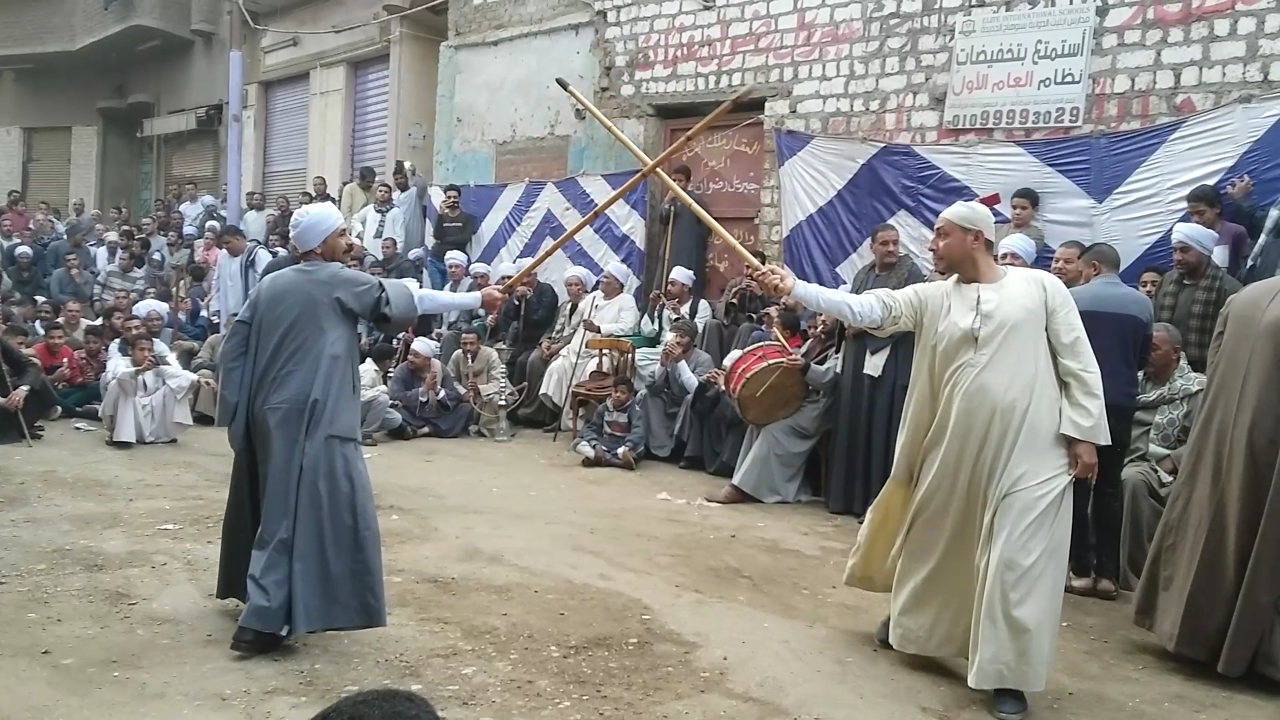
Tahtib or Tahteeb (Egypt)
- Name of sport (game): Tahtib
- Name in native language: تحطيب taḥṭīb (egyptian arabic); تحطيب - لعبة العصا originally named fan a'nazaha wa-tahtib ("the art of being straight and honest through the use of stick"); the word 'Tahtib' comes from 'Hatab' which means 'wooden stick'.
- Place of practice (continent, state, nation):
Egypt
Although sport is practiced throughout the Nile Valley in Egypt, it is especially concentrated in Upper Egypt in the governorates of Minya, Assiout, Sohag, Qena, Luxor and Aswan. Less often in the Delta region, in the Sharkiya Governorate, this tradition is primarily maintained especially in the countryside. In addition, in large cities such as Cairo and Alexandria, Tahtib practice is associated with the concentration of the Saeedy community (rural population of Upper Egypt). Tahtib is practised in desert areas by inhabitants of Bedouin communities.
However, Tahtib cultivation is not limited to Upper Egypt communities, because the Tahtib tradition has been adopted by other rural communities living in Delta. It happened as a result of a large migration of people from Upper Egypt who, practicing Tahtib, disseminated this sport, treating it as an important element of their cultural heritage, people wanted to preserve elements of their cultural identity. - History:
For many centuries, the stick has a special role in Egyptian social life, especially in rural life, because it accompanied with fallahs (the peasants) in their daily lives and is a sign of masculinity. The stick being the main tool of tahtib, the stick was a tool that accompanied the man since he inhabited the earth, so it was initially a supporting tool for him to carry wherever he went, then developed to a longer hand that he used to pick up the fruits far from his reach, or turned into a third foot that helps him to move.
Stick then developed to be a major tool in cattle grazing, to become a symbol of the shepherd's authority over his own herd. With with the escalation of human conflict, the stick became a weapon used in self-defense against threats.
The name, tahtib, is derived from the Arabic name of branches of dry trees (Hatab).
Tahtib is an original martial art using a stick,it has been known since the fifth Egyptian dynasty of King Sahourêh (2600 BC). The oldest signs of Tahtib were discovered in the figures from the archaeological stand of Abusir, a vast necropolis from the Old Kingdom period, located in the southwest suburbs of Cairo. Some reliefs of the Sahure Pyramid (V Dynasty, about 2500 BC), as well as paintings and signatures, are extremely accurate, depicting what appears to be military training with a stick. Tahtib, archery and wrestling were then mandatory elements of training soldiers.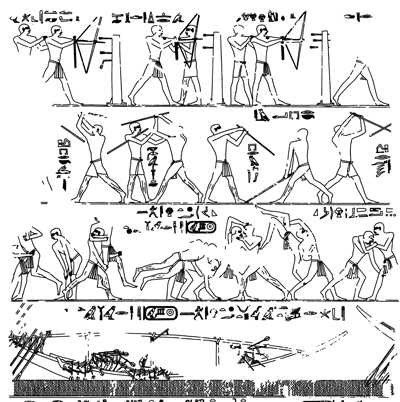 Engravings at the Abusir necropolis showing scenes of archery, wrestling, and stick fighting.
Engravings at the Abusir necropolis showing scenes of archery, wrestling, and stick fighting.
In three of the 35 tombs of the Beni Hassan necropolis (XI-XII dynasties, 1900–1700 BC), drawings of Tahtib scenes can be found near the city of Minya. Similar images can be seen at the archaeological stand of Tell el Amarna (XVIII Dynasty, 1350 BC), about 60 km from the south of Minya.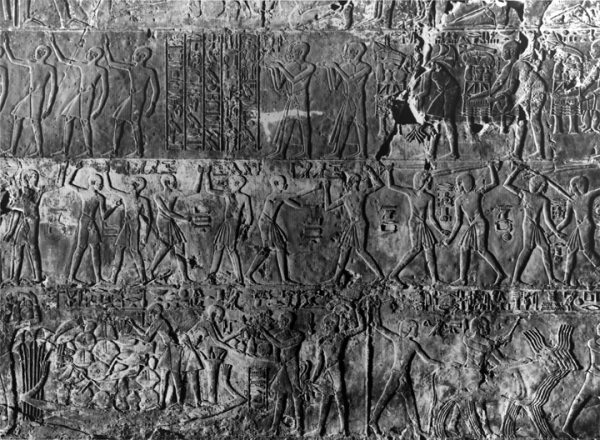
Tahtib is considered a martial art by using a stick to achieve the physical and mental perfection.
The art of tahtib, through its technical and rhythmic means that has evolved throughout its very long history, brings positive and consistent energy for both competitors and the audience as well.
The art of tahtib convey huge contributive potentials at the social and cultural levels in Egypt and abroad.
With the dawn of ancient civilizations, the ancient Egyptians invented the rules and origins of this sport and took great interest in it, as tahtib was not specific to a certain social group, and the ancient Egyptian artists engraved it on many walls of ancient pharaonic cemeteries and temples. In Giza governorate, inscriptions were found that belonged to King Sahoo Ra II of the Fifth Dynasty, which included symbols of tahtib. On the other hand, tahtib symbols appears as a ceremonial art in the era of the modern state 1500 - 1000 BC on the archaeological walls of the regions of Luxor and Saqqara, and archaeological inscriptions were also found in Minya Governorate, and that was during the reign of the eleventh and twelfth dynasties in the Temple of Medinat Habu, which the king Ramesses III built in the twentieth dynasty of the era of the modern state 1183-1152 BC, also found symbols depecting men playing with sticks in "Khro AiF" cemetery in the tombs of the nobles in Al Asasef, the western mainland in Luxor.
Tahtib in the Roman era:
It has been mentioned in primitive Christian literature that tahtib was practiced for entertainment and a form of folk art appears on holidays and weddings.
Tahtib in the Islamic era:
This sport was not limited to the Pharaonic era, but we find it in the Islamic era depicted in a Mamluk manuscript for equestrian sports dating back to the ninth Hijri century (15th century), preserved in the Museum of Islamic Art in Cairo with record number (18019 -18021). This manuscript has five pictures, three of them in The Museum of Islamic Art and two in the Sharif Sabri collection and photographs and they are depicting men playing with sticks, either standing - on their feet - or on horseback.
Also, "the stick" and "stick play" have been mentioned in the Holy Qur’an and the prophet Muhammad's narrations many times.
Today, this sport is perceived more as an artistic event than a sport competition, which expresses the attitude and skills of the body, strengthened by music played by folk musicians using traditional instruments derbouka / tabl (drum), mizmar (oboe).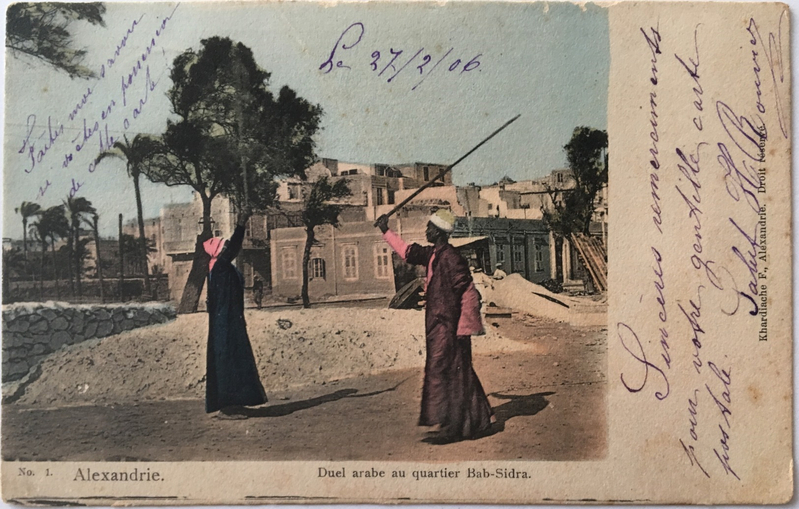
Tahtib au quartier Bab - Sidra. Alexandrie 1906 - Description:
Although Tahtib is a fight between two people, the event is a collective event in which players, musicians and the audience is gathered in a circle participate. Dance is used as an introductory phase and is a ritual of harmony. Each player holds the stick as a tool used for this duel. The stick used in Tahtib is about four feet long (about 130 cm) and is called asa, asaya, assaya, nabboot or nabut. The wood is oiled to prevent drying. The stick is held at one end. Some teachers recommend placing the thumb along the stick. The wrist remains flexible in rotation and is stiffened when stroke. The left hand moves on the stick to various defensive positions or attacks.
The duel begins with the rivals picking up the stick as a sign to start the fight, and then greeting each other. Each rival then ritually performs el-mussalpha. Competition begins only when rivals grab the sticks with both hands and start the fight. The winner is the one who touches the body of his rival with a stick. During the competition, everyone tries to move with a stick in such a way as to touch the body of the rival, and at the same time defends against touching the rival with the stick, mainly the head and upper body.
Spectators not only cheer but can end the competition if the rules are exceeded by one of the competitors.Tahtib has certain rules and promotes a number of values such as chivalry, strength, pride and harmony. Therefore, this sport is a source of entertainment, joy and pleasure during various celebrations.
Currently, Tahtib is a stick competition that lasts about a minute. Competition is in accordance with the rules, particularly it is important to:
1. Full mutual respect,
2. Full control.
Sheikh (judge) is responsible for the course of the competition; his decisions are definitive, especially when he witnesses hostility. Then he intervenes, sending away the perpetrator and calls for a new participant. Such intervention is called Al Qatea.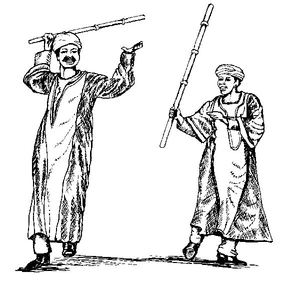
Tahtib skills are passed through training and combat simulation in which older people teach children at the age of 10. They begin with the rules and ethics, followed by stick and self-defense techniques, ending with the skills necessary to achieve advanced Tahtib techniques. Elders are happy to share their personal experience. It is important not only courage, strength, agility or cunning but also respect for the Tahtib tradition.
Practices with the Egyptian stick:
● Face to face, each person lifts the stick up. The wrist that holds the stick is turned inward, the stick is slightly inclined laterally to protect the face.
● Together, the partners are turning the stick over their heads, almost touching. This is done 4 times.
● Hitting with the sticks 4 times. Hitting in medium force, not more.
● Reversing the figure eight and doing the same as above - 4 times.
● Neutralizing body movement, walking normally, the same movements for the arms in one direction then the other. Reversal of direction of movement of the body. 4 times.
The principle is to touch, to touch the head or a body part. The head is decisive. It is forbidden to hit the hand, arm and shoulder.Tahtib, in addition to its defensive function, has been still practiced as entertainment, generally associated with various ceremonies such as marriage, return of the pilgrims and Mulid (feast of saints). The dance form of Tahtib was originally performed by men, but later women also began to participate in the performances, either dressing up as men and imitating them or in the form of a dance called ra's el assaya (dance stick).
- Current status:
The art of tahtib is currently practiced in various ways:
The first way: It is practiced as a sport and technique for self-defense.
The second way: It is practiced as a traditional popular game.
Third way: It is practiced as a show dance with the stick, and it is worth noting that the three types are also engraved on the walls of pharaonic temples and tombs.Tahtib is practiced by men from different social classes and age-group, starting at the age of 10, often continuing up to the age of 80. Many of them play an important role in promoting and protecting Tahtib, teaching the principles and skills of using the stick, their relatives, neighbours and everyone who is interested in it. They are happy to participate in various celebrations, presenting this sport. They also organize competitions to encourage experienced players, but also to introduce new ones, get to know different techniques and skills, trying to exchange and transfer knowledge. In addition, when Mulid is organized (even five nights), they take the opportunity to invite players from other regions.
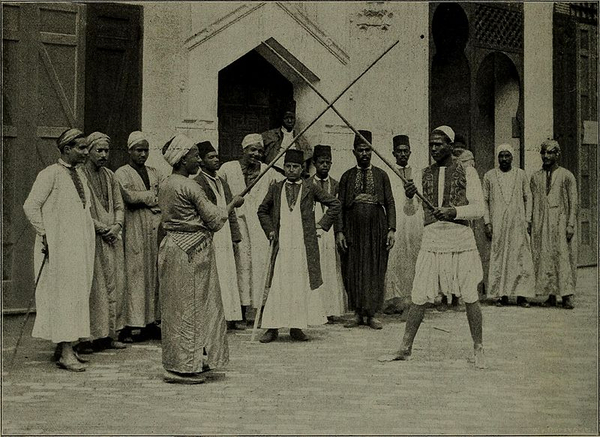 Staff Play in Cairo Street, World's Columbian Exposition (1893 Chicago, Ill.)
Staff Play in Cairo Street, World's Columbian Exposition (1893 Chicago, Ill.)The Egyptian government continues to play an important role in protecting this sport, both through education and practice. The Higher Institute of Folk Art (affiliated at the Art Academy of the Egyptian Ministry of Culture) lists Tahtib among popular Egyptian games and offers courses on how to learn it. A post-graduate Tahtib program is also available for interested institute students. In addition, the Ballet Institute encourages graduates to study Tahtib as an inspiration for choreography. The General Authority for Cultural Palaces promotes the creation of Tahtib groups and also organizes the annual Tahtib festival in Luxor. The Ministry of Sport promotes Tahtib activities in clubs and youth groups in all Egyptian governorates.
This martial art was inscribed on the UNESCO World Heritage List as the intangible cultural heritage of Egypt in 2016. - Importance (for practitioners, communities etc.):
Tahtib engages both the player and the audience. An important element of this sport is respect for the elderly and for the weak. Tahtib is a practice, that strengthens family ties and good social relations because it is considered an important element of joint festivities. Practicing Tahtib gives young people a sense of responsibility. Strengthens team spirit between players of the same origin. It is an expression of the identity of those who practice this sport.
Its function has a social and festive dimension because people usually find Tahtib in social situations at various stages of life, such as marriages, local festivities or religious ceremonies. At the individual level, Tahtib practitioners seek self-esteem, respect for their community, and many other qualities that define him as a defender of their culture, community, and family. The Tahtib player is seen in the eyes of many as the hero of legendary folk tales. Rural communities play an important role in preserving Tahtib, especially thanks to their commitment to practicing and improving this sport, as well as their enthusiasm in passing it on to their children. Throughout its history, Tahtib has been of interest to communities that have regularly organized informal shows. Currently, Tahtib is the subject of many associations founded to protect this sport and to pass it on from generation to generation.
- Contacts:
The International Center Arts of Tahtib - https://www.facebook.com/Tahtib/
Tel. +20 102 406 1481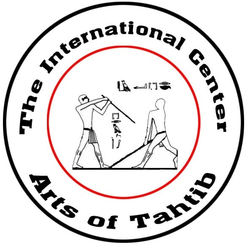
المركز الدولي لفنون التحطيب Ticfaot - https://www.facebook.com/tahteep/
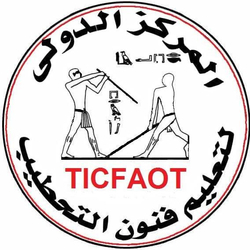
Modern Tahtib
Address: SEIZA, BAL 66, MDA 14, 22 rue Deparcieux, Paris
Web: http://www.tahtib.com/
Facebook - https://www.facebook.com/ModernTahtibOfficial/
YouTube: https://www.youtube.com/user/tahtibseiza?feature=watch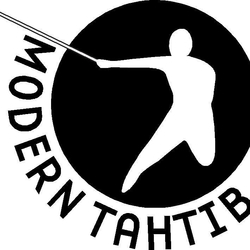
- Sources of information :
Books:
Al-'Antabri, Farag, al-aalat al-musiqiya al-sha'biya (Popular Musical Instruments). Cairo: Ministry of Media, 1994
Al-Sabbahy, Ahmed, al-maharat wa al-al'aab al-sha'biya (Popular Skills and Games). Cairo: Dar al-kitab al-'araby, 1964
Al-Khadem, Saad, al-raqs al-sha'abi fi Misr (Popular Dance in Egypt), al-maktaba al-thaqafiya series, vol. 286. Cairo: Egyptian General Book Organization, 1972
Boulad, Adel, Modern Tahtib – Egyptian Baton Martial And Festive Art, Budo Editions, 2014
W. Decker, Sports and games of Ancient Egypt, Yale, 1992
D. Farout, Tahtib l’art de l’accomplissement et du bâton, Egypte Afrique & Orient n° 60, janvier 2011, p. 67-69.
Gaber, Samir, atlas al-raqasat al-sha'biya al-misriya (Atlas of Egyptian Popular Dance). Cairo: National Center for Theatre, Music and Popular Art, 2009
Mohasseb, Hossam Eddin, al-tahtib fi al-saeed (Tahtib in Upper Egypt), Annal of the Academy. Cairo: Academy of Popular Art, 2006
Salama, Amin (translation), Encyclopedia of Ancient Egyptian Civilization. Cairo: Egyptian General Book Organization, 2001
Saleh, Maher, al-forousiya wa raqs al-khayyal (Horseback riding and dancing), Magazine of Popular Art, vol. 2. Cairo: Egyptian General Book Organization, 1965
J. A. Wilson, Ceremonial Games of the New Kingdom , JEA 17 (1931), p. 211-220Articles:
Tahtib - https://www.egyptos.net/egyptos/actualite-egypte/le-tahtib-un-art-martial-egyptien-pluri-millenaire-vivant.php
Tahtib and Egyptian Raqs al-Assaya: From Martial Art to Performing Art - http://www.shira.net/about/tahtib.htm
"Tahtib".. Pharaonic Martial Art Turned into a Folk Dance - https://egyptiangeographic.com/en/news/show/376
Tout en baton - https://www.lemonde.fr/sport/article/2014/05/16/le-tahtib-tout-en-baton_4419533_3242.htmlVideo:
https://www.youtube.com/watch?v=OMVHFduY_Eo
https://www.youtube.com/watch?v=SX0RTJLK4Yo
https://www.youtube.com/watch?v=y49gWQWEADg
The Basic Movements of Egyptian Stick Fighting (Tahtib) - https://www.youtube.com/watch?v=lj3Zm2TmEVwSource of photos used in this article and gallery:
Photos of International Center For Tahtib
https://www.ancient-origins.net/history-ancient-traditions/tahtib-0015734
https://commons.wikimedia.org/wiki/File:Egyptian_Tahtib.jpg
https://pl.pinterest.com/pin/701154235708765595/
https://commons.wikimedia.org/wiki/File:Tahtib_-AncientEgypt_sport.jpg
https://www.bloodyelbow.com/2019/8/28/20835175/tahtib-egypts-ancient-martial-art-pharaohs-mma-feature
https://fr.wikipedia.org/wiki/Tahtib
https://www.hotelsheherazade.com/blog/2017-luxor-national-festival-of-tahtib
https://www.thestar.com.my/lifestyle/culture/2021/05/03/ancient-egypt-martial-art-enthusiasts-eye-olympic-status
https://www.ara.cat/estiu/l-art-marcial-gent-perdia-vida-evolucionat-fins-dansa_130_4454355.html
https://commons.wikimedia.org/wiki/File:Staff_Play_in_Cairo_Street,World%27sColumbian_Exposition_%281893_Chicago,Ill.%29-14595971157.jpg - Gallery:

